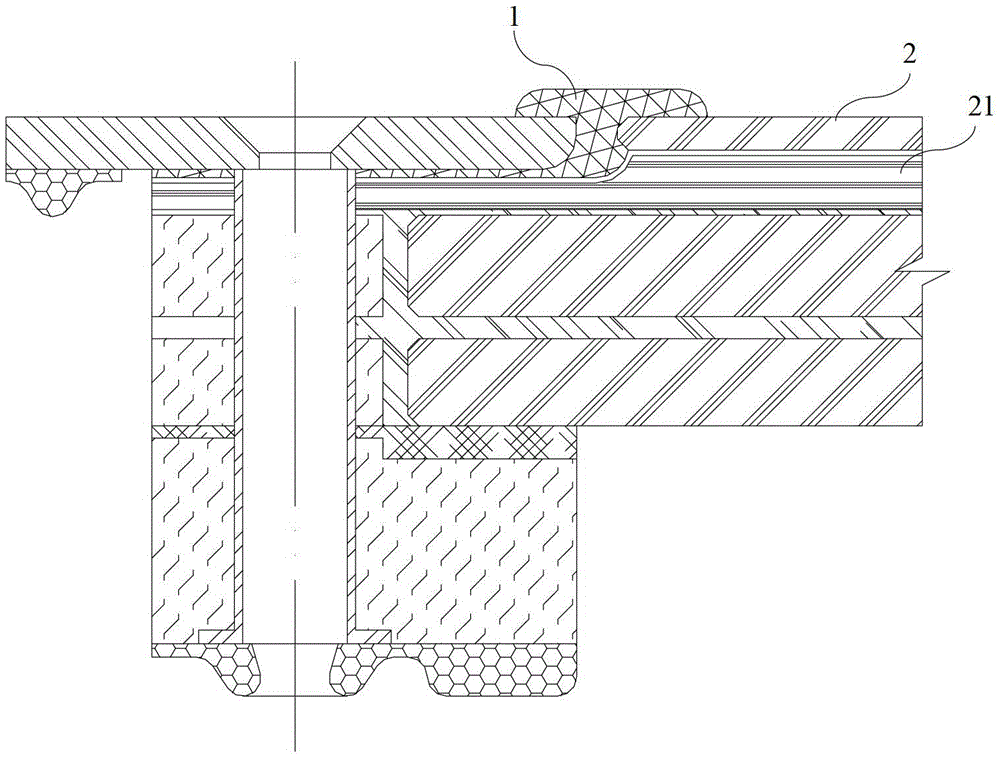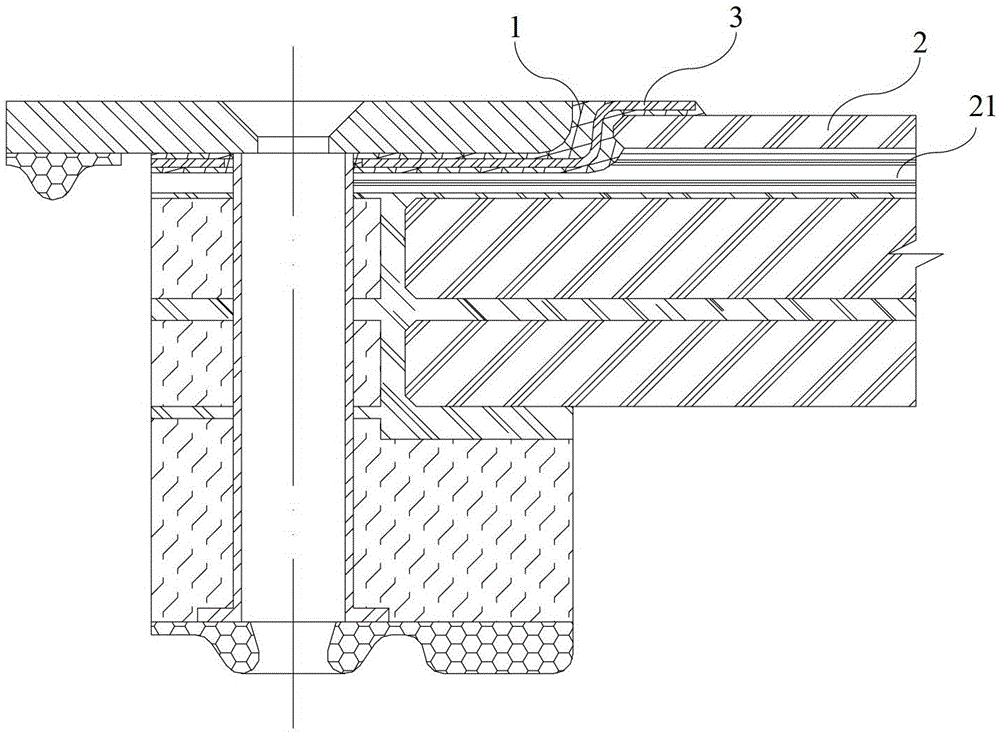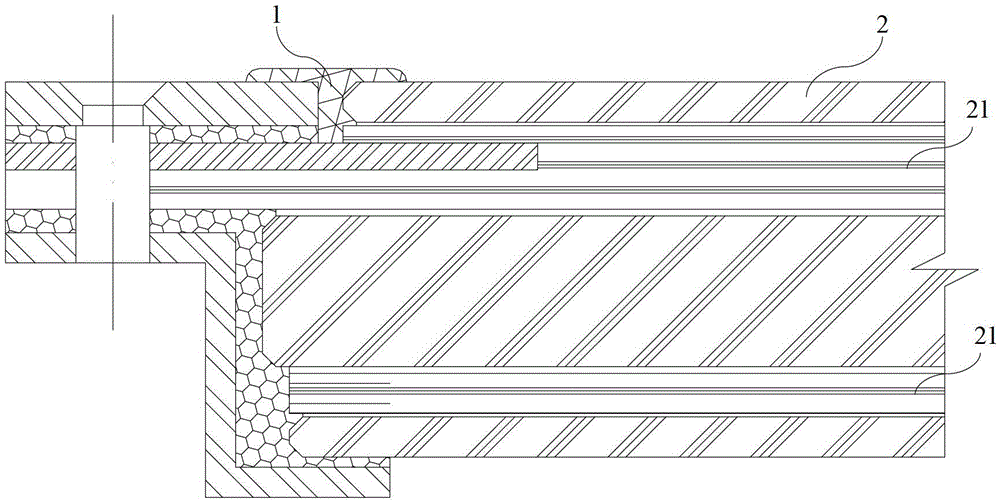Fastening structure and fastening method of transparent parts of civil aviation aircraft window
A technology for fastening structures and transparent parts, which is applied in the direction of aircraft accessories, aircraft parts, chemical instruments and methods, etc., can solve problems such as short service life, accelerated aging and failure, corrosion of internal structural glue, etc., to improve assembly interchangeability , to avoid assembly stress, to ensure the integrity of the effect
- Summary
- Abstract
- Description
- Claims
- Application Information
AI Technical Summary
Problems solved by technology
Method used
Image
Examples
Embodiment Construction
[0080] The present invention will be further described below in conjunction with specific examples.
[0081] See Figure 6-8 , in the first preferred embodiment of the present invention, the fastening and installation structure of a window transparent part of a civil aviation aircraft of the present invention includes a body 1 and a transparent part 2 installed on the body 1; the periphery of the transparent part 2 is combined with a The frame 3 is formed with an installation structure matching the body 1. The frame 3 includes a pressing component 31 and a fastening component 32. The pressing component 32 cooperates with the transparent part 2 to press the fastening component 32 to generate prestress and then fasten the transparent part 2. Among them, the transparent part 2 can be used Figure 7 The plane transparent part 2 shown; can also be used Figure 8 Curved transparent piece 2 shown.
[0082] see Figure 9-14 , for the convenience of description, the following defin...
PUM
 Login to View More
Login to View More Abstract
Description
Claims
Application Information
 Login to View More
Login to View More - R&D
- Intellectual Property
- Life Sciences
- Materials
- Tech Scout
- Unparalleled Data Quality
- Higher Quality Content
- 60% Fewer Hallucinations
Browse by: Latest US Patents, China's latest patents, Technical Efficacy Thesaurus, Application Domain, Technology Topic, Popular Technical Reports.
© 2025 PatSnap. All rights reserved.Legal|Privacy policy|Modern Slavery Act Transparency Statement|Sitemap|About US| Contact US: help@patsnap.com



